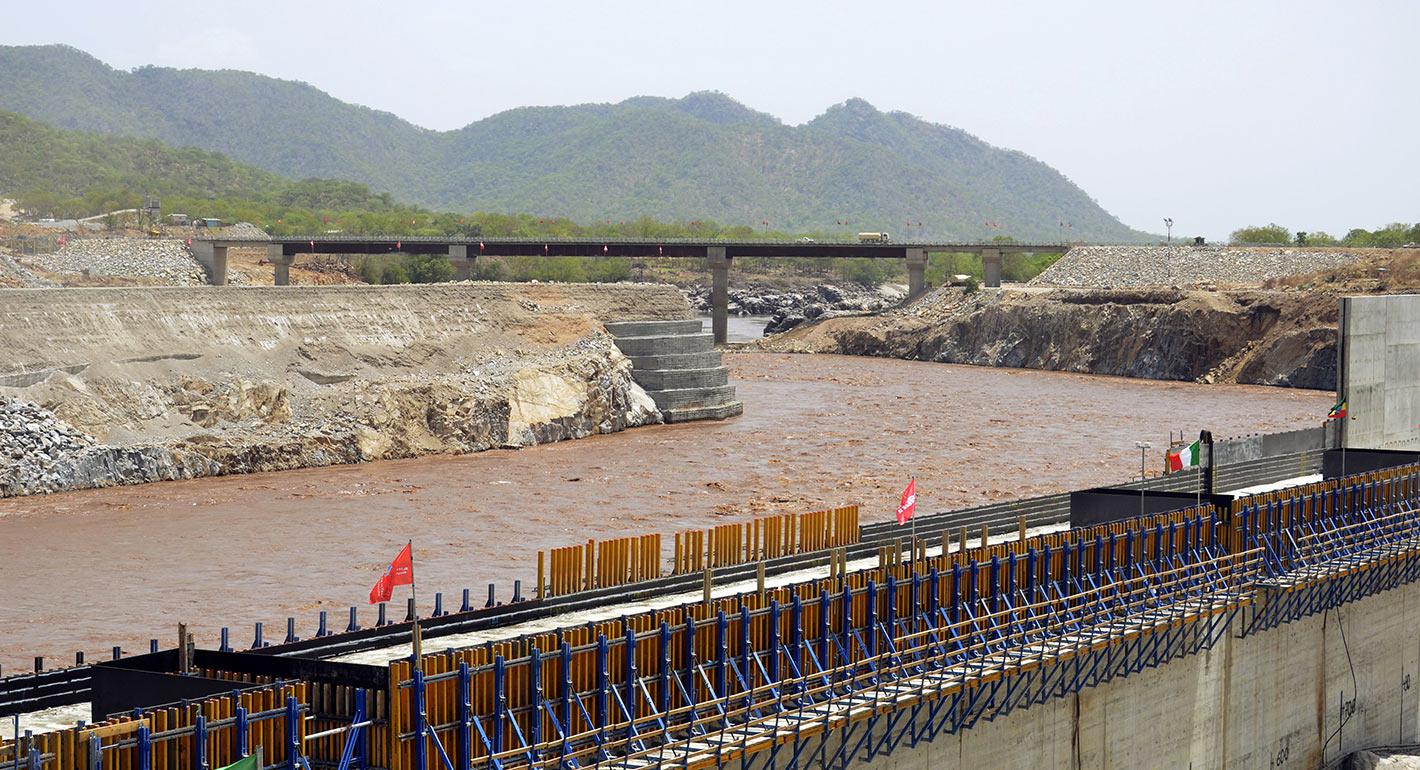As climate change accelerates, the Nile dispute has entered a new era of complexity, prompting regional states to compete for water, food, and energy security. The construction of the Grand Ethiopian Renaissance Dam (GERD), a non-consumptive hydropower project being built by Ethiopia on the Nile, has further complicated the relationship between Ethiopia and Egypt—two states that respectively frame the project as a matter of existential necessity and an existential threat. Yet, this conflict does not revolve only around physical resources but also extends to the very identity of the two states.
Since the start of GERD construction in 2011, Cairo has asserted that the project poses a threat to Egyptian and regional stability, and specifically to Egyptian water security. Conversely, Ethiopia maintains that the GERD is a development project rather than a security-based political project. Despite these different assertions, it is clear that the quests of the conflicting parties to maintain ontological security—or the preservation of state identity—are driving factors for the Nile dispute.
Ontological insecurity may arise when internal and external developments disrupt the continuity of established identities and worldviews. It could be argued, then, that the GERD project threatens the continuity of Egypt’s enacted world that sees the Nile as a living being inseparable from Egypt’s history, culture, and civilizational identity. Thus, developments related to the project could force Egypt to redefine its national identity that is centered on the Nile River.
Concerned about this possibility, Cairo securitized the issue, immediately opposing the project when it was announced by Ethiopia in 2011. The conflict further escalated in 2013 when Ethiopia diverted the river to construct the dam—a move believed by some Egyptian parties to be a red line. Egypt has ultimately raised the GERD conflict in the UN Security Council.
Addis Ababa is also struggling for both material and non-material security. In Ethiopia, the GERD is not only a piece of physical infrastructure that generates electricity but is also a symbol of unity in the face of poverty and perceived backwardness. It is framed as a sovereignty project equated with the victory of Ethiopia against Italy at the battle of Adwa in 1896. This modern victory is not won against a foreign aggressor but over an internal enemy—abject poverty. The GERD also changed the public perception of the Nile (“Abbay” in Amharic) from a river that steals Ethiopia’s precious resources to a force for Ethiopian development. The river—which was a source of division in the past—is now used by the ruling elite to unify the population under a socially constructed “new Ethiopia-ness” with the GERD at the center.
Furthermore, this conflict over identity stretches beyond the borders of Ethiopia and Egypt. By Ethiopia, the dam is framed as an African project, as the river is shared by 11 African countries, and the GERD is believed by some to support Africa’s green transition. Egypt, on the other hand, explains the same developments as representing a threat to Arab water security. Dueling attempts to “Africanize” and “Arabize” the Nile are at the forefront of the struggle between differently constructed Nile worlds.
Ultimately, contestation over the GERD is not merely about the material aspects of resource security. Rather, it is also a conflict between Egypt’s ancient identity centered on the Nile and Ethiopia’s new Nile-centric identity—which is under construction. Negotiation in the context of this identity struggle is a zero-sum game. Thus, the achievement of a deal between the two states on the material aspects will require efforts to de-securitize the Nile against a fraught backdrop of competing identities.
Gashaw Ayferam is a doctoral candidate at Addis Ababa University and researcher at the Institute of Foreign Affairs. His research interests include green energy transition, hydro-politics, and geopolitics in the Red Sea and Horn of Africa.


.jpg)



